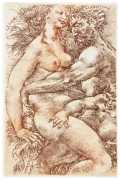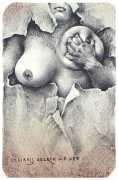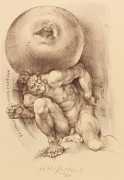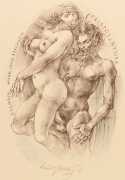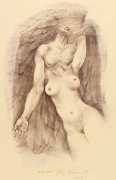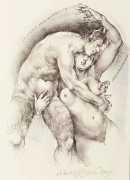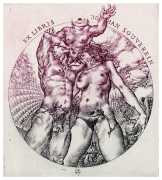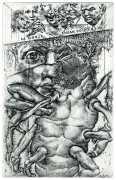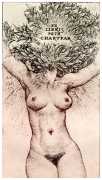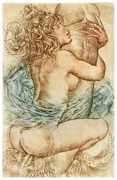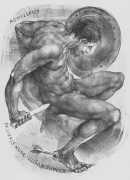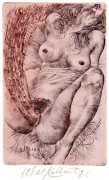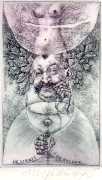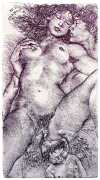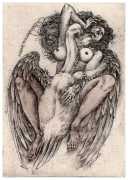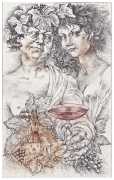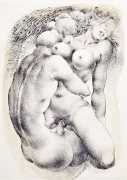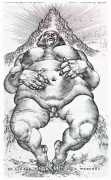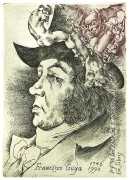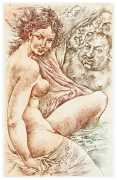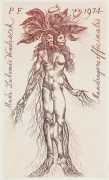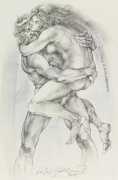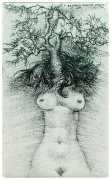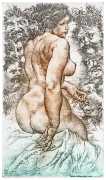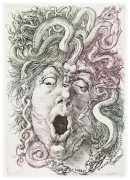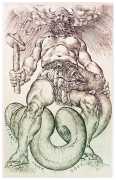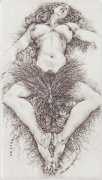Oldřich Kulhánek started producing bookplates or ex libris for his friends in the early 1970s, and continued for the next thirty years. He was fond of using well-known themes from Greek mythology as the basis for explicitly sexual liaisons – Priapus and Nymea, Jupiter and Io, Jupiter and Danae; whether arising from his clients’ ideas or his own imagination is not recorded.
The first known bookplates or ex libris – a Latin phrase meaning ‘from the library of’ – are woodcuts from the fifteenth century, displaying the owner’s name and coat of arms. Through the centuries ex libris designers came up with ever more artful and imaginative designs for their clients’ libraries, inspiring a mania for collecting bookplates which lasted from the final quarter of the nineteenth century until the 1930s.
From the 1970s ex libris were once again in demand, eagerly sought by specialised collectors, and today there are websites, fairs and exhibitions dedicated to the artform. Many plates are now produced as signed and numbered small format fine art prints, known as ‘free’ ex libris, never intended to be glued inside books but instead to be framed and displayed in the library of the client fortunate enough to be able to afford to commission it.


